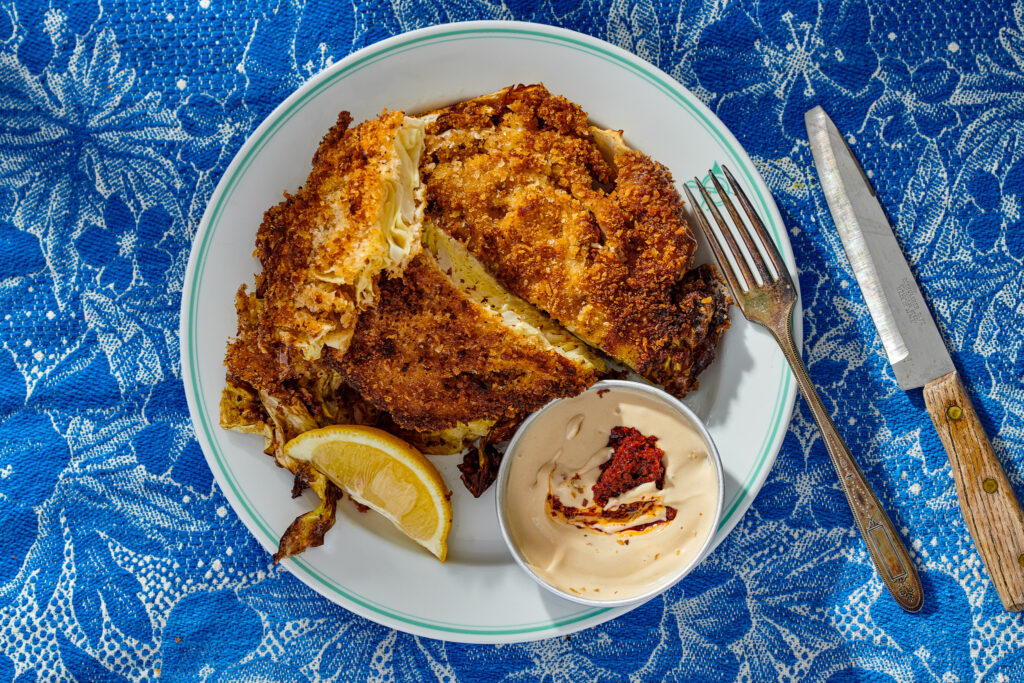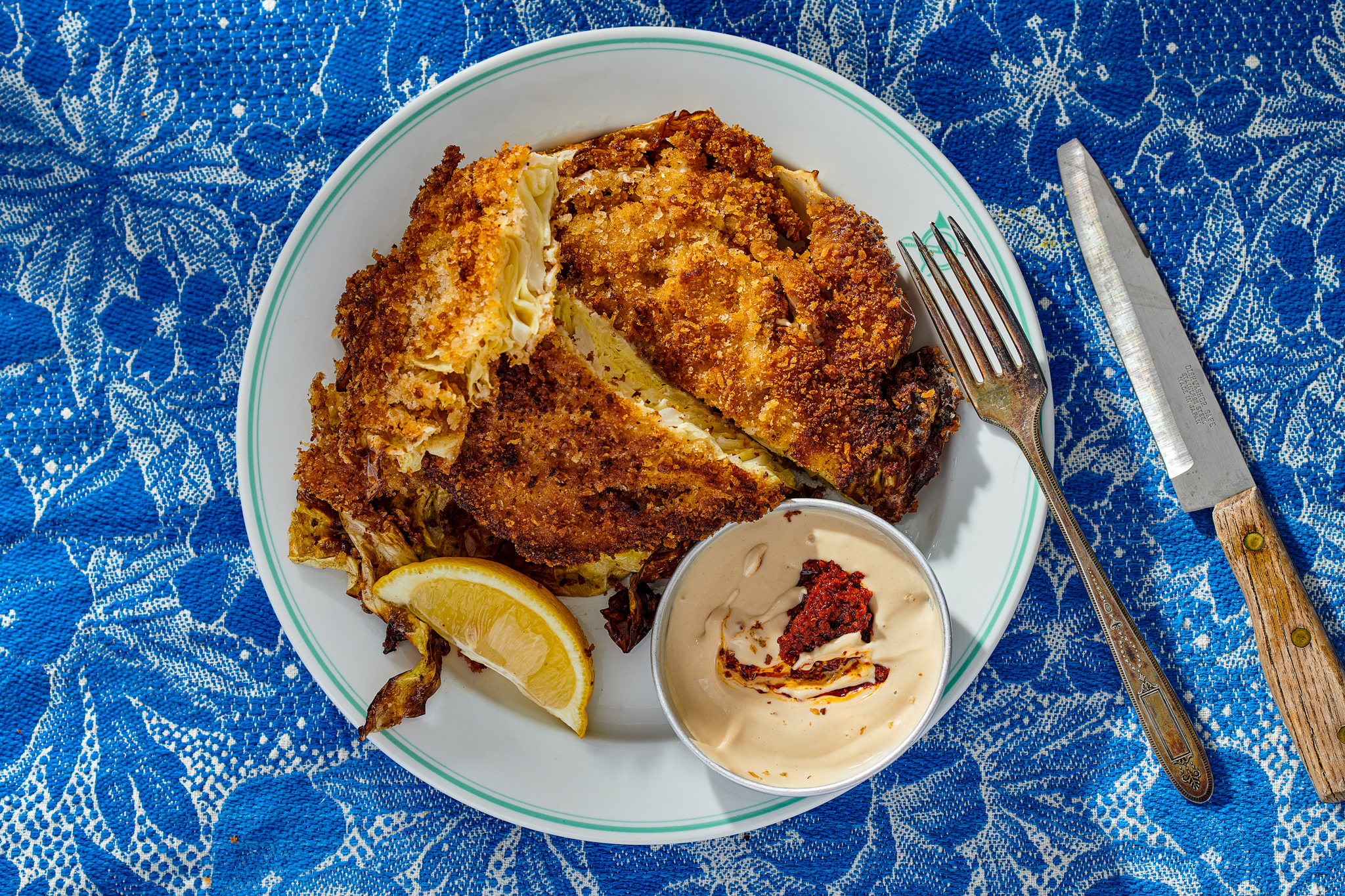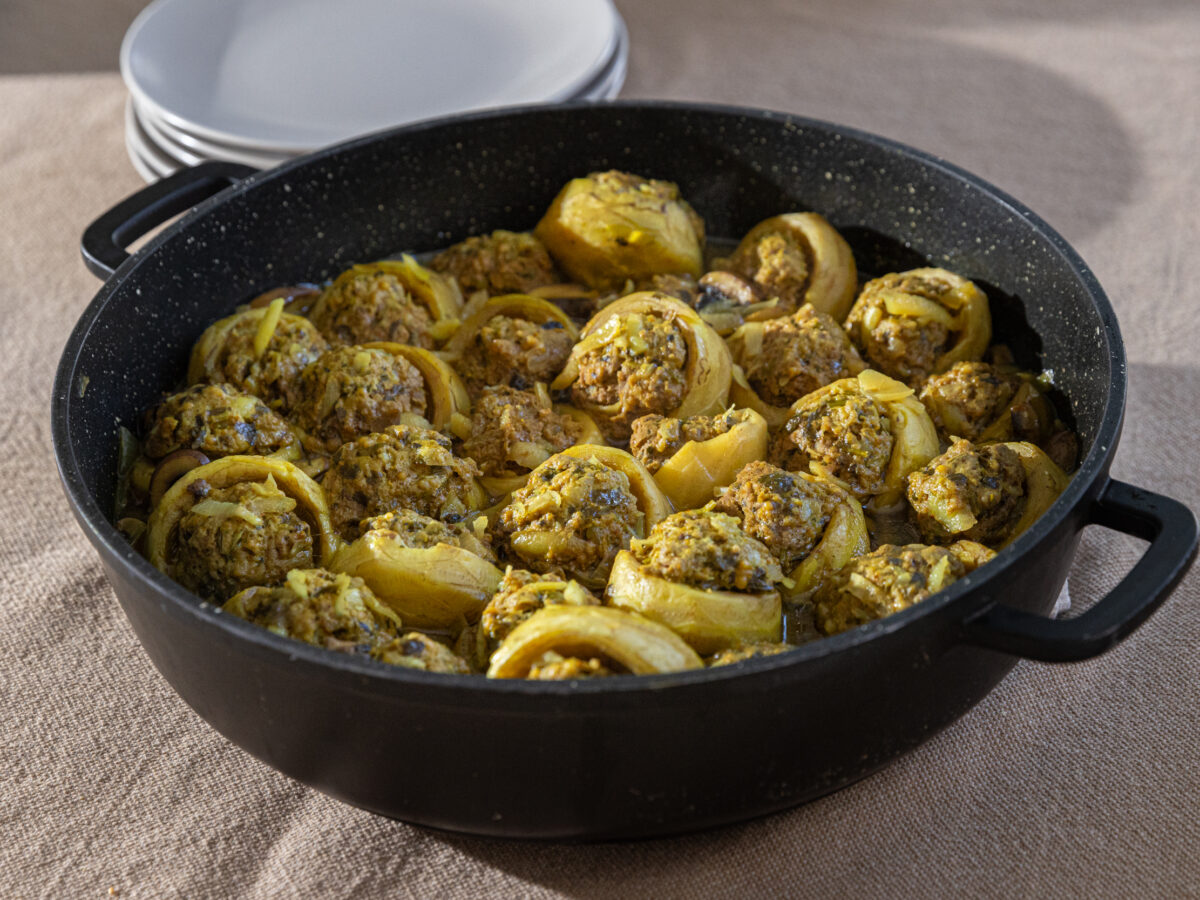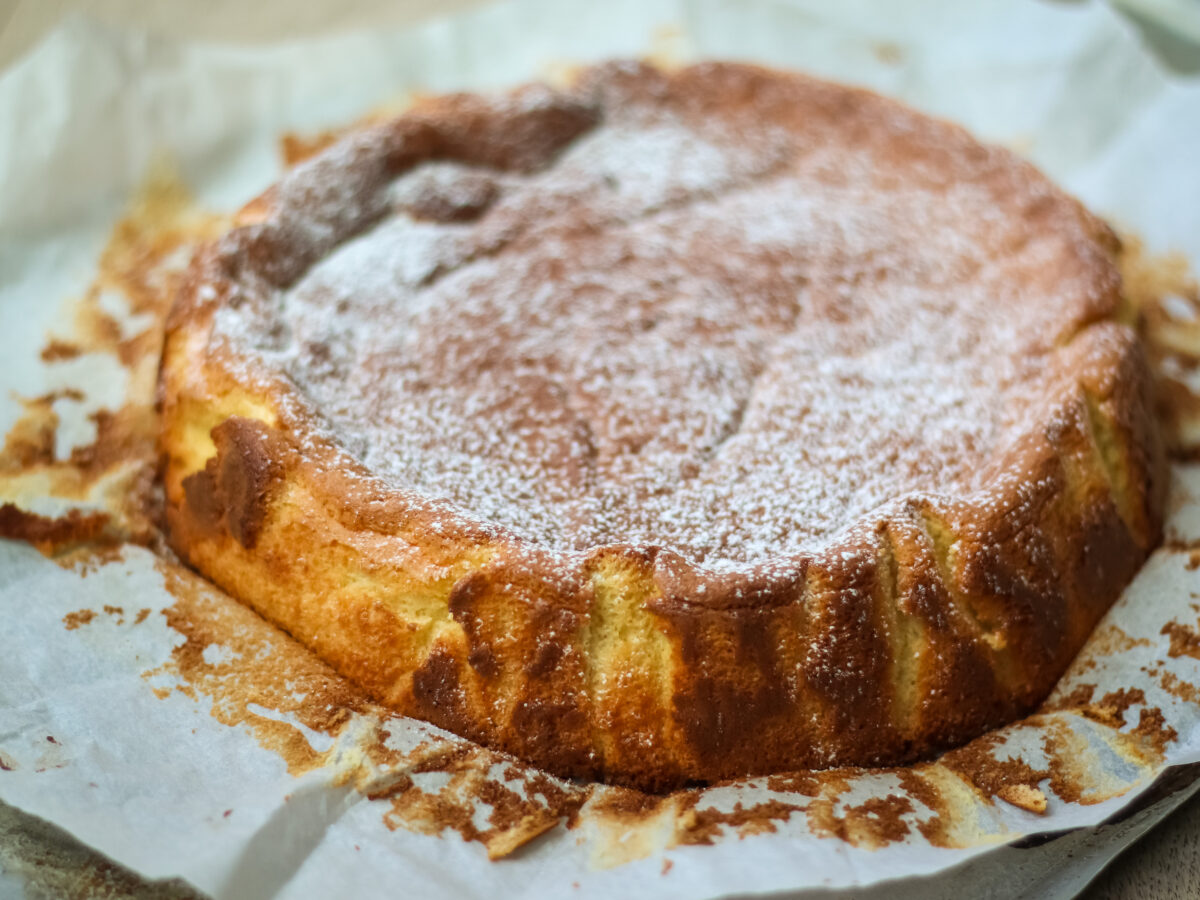
This recipe was taken inspired by the 1948 book “This Is How We Cook,” published by the Women’s International Zionist Organization. It’s a classic example of a meat-focused dish, like schnitzel, that was adapted to be vegetarian during the Tzena era, a period of austerity and rationing that lasted from 1949 to 1959 in Israel. However, according to Erela Taharlev Ben Shachar, a historian of nutrition researching the history of food in Israel, the reason vegetables are abundant in the book is not only due to economics: during those years the Women’s International Zionist Organization, which published this book, encouraged women to take up farming and grow their own vegetable gardens. The cookbook was aimed at helping support the women farmers and make the most of the vegetables they grew.
More than 50 years later, this recipe is just as relevant in a country with a large vegetarian population and those cutting back on meat. If you prefer to bake instead of frying the schnitzel, preheat the oven to 180°C/350°F and bake until golden, 25-30 minutes. Ha’achim chef Zion Barnes, who modernized this recipe, recommends serving the schnitzel with the addition of warm tahini (prepare tahini as usual and heat lightly in a pot), homemade ketchup, mustard or hot sauce, and a lemon wedge on the side.
This dish is part of a collection of vegetarian and vegan recipes inspired by early Israeli cookbooks from just after the founding of the state. Check out the full collection here and read more about one of the cookbooks, “Sefer Bishul,” here.
Ingredients
- 1 large white cabbage
- 1 tablespoon coarse salt
- 1 cup matzo meal, or bread crumbs (see recipe)
- 4 eggs, beaten
- 2 tablespoons Dijon mustard
- Pinch of salt
- Pinch of ground black pepper
- Vegetable oil, for shallow frying
- For the bread crumbs:
- 1 loaf bread, stale (at least 2 days old)
- For the homemade ketchup:
- 1 kg (2.2lb) ripe tomatoes, coarsely chopped
- 200 grams (7 ounces) brown sugar
- 4 tablespoons red wine vinegar
- 2 garlic cloves, crushed
- ½ teaspoon salt
- ½ teaspoon cumin
- ½ teaspoon ground black pepper
- ½ teaspoon mustard powder
- 1 tablespoon sweet paprika
- To serve:
- Homemade ketchup (see recipe)
- Lemon wedges
Preparation
- Prepare the bread crumbs: Preheat the oven to 150°C/300°F and line a baking tray with parchment paper. Finely grind the bread in a food processor and spread in an even layer in the tray. Bake until golden, 15 minutes. Cool and keep in an airtight container.
- Prepare the ketchup: Mix all the ingredients in a pot and bring to a boil over a medium-high heat. Reduce to a low heat and cook, occasionally stirring, until the tomatoes soften and break apart and the liquids are reduced by half to a thick ruby-red sauce. Cool for 8 minutes.
- Transfer to a food processor and pulse to a smooth sauce. Transfer the sauce to a sterilized jar through a dense sieve. Keep refrigerated.
- Prepare the cabbage: Place the whole cabbage in a pot, cover with water and add coarse salt. Bring to a boil, cover and cook for 20 minutes, until the cabbage has slightly softened but still has a bite (use a sharp knife to check the cabbage is ‘al-dente’). Drain and cool.
- Slice the cabbage lengthwise into 3cm/ 1.2-in thick slices, and place over a towel to soak up any excess water.
- Add approximately 2-3cm/ 1-in of oil to the skillet and place over medium heat. Place the matzo meal (or bread crumbs) in a bowl. In a separate bowl, beat the eggs with the mustard, salt, and pepper.
- Dip each slice of cabbage in the beaten egg, then dip it in the breadcrumb mixture until evenly coated on both sides. Transfer to the skillet and fry until golden brown on both sides (about 2 minutes per side). Transfer to a plate lined with a paper towel and serve with ketchup and a lemon wedge.




